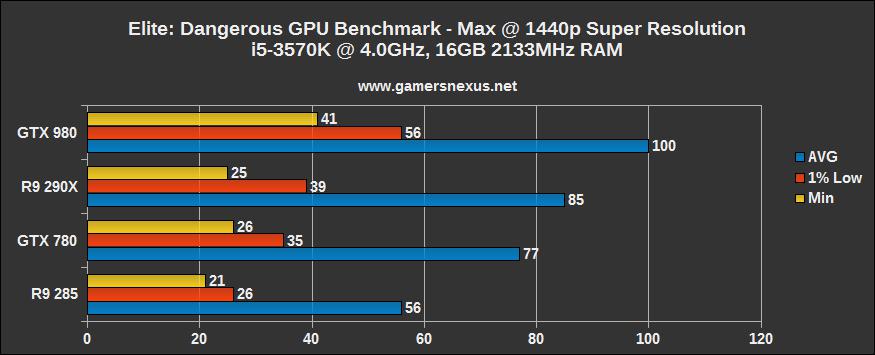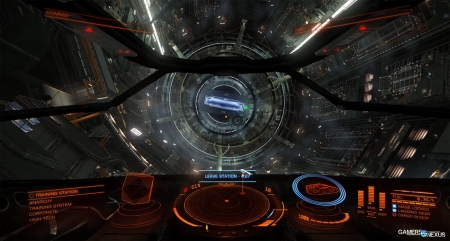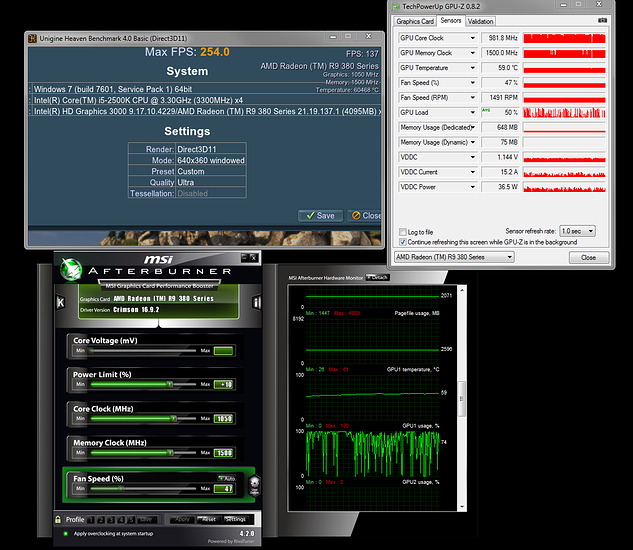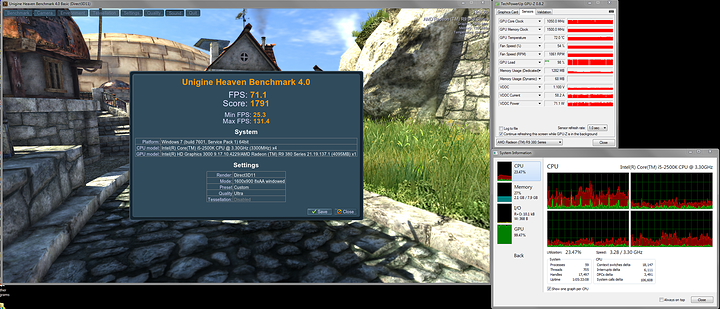For that reason, I think it’s time to replace my current graphics adapter. My system specs include an FX 8350 that has been slightly overclocked (4.3ghz), a GTX 770, a Seasonic 750-watt power supply, and 8 gigabytes of RAM.
- What Is The Best Wine With Ahi Tuna ? Pairing Wine With Fish: What To Choose
- Best Hb?: Madden Mobile Best Hb In Madden Mobile!! Who Is The Best Hb In The Game
- Warframe Best Ivara Build – Warframe Ivara Build Guide
- 13 Of The Best Simple Plan Songs From Over The Years, Top 10 Simple Plan Songs
- Nba 2K17: Best Defensive Players In Nba 2K17 Should Be, Best Defensive Players: Nba2K
There is no need to upgrade the CPU or motherboard because the computer is doing its job perfectly. Simply put, I want the most powerful graphics processing unit (GPU) that the FX 8350 can run without slowing down.
Bạn đang xem: How To Pick The Best Gpu For Fx 8350 (Amd Fx 8350, 2021), Best Gpu For Fx
Both Elite Dangerous and Diablo III are two of my primary gaming interests. If it isn’t possible to get a graphics card that can handle three 1080p displays at a playable frame rate, I’d settle for one that can handle a 1440p display at 60 frames per second or more.
For maximum immersion in my space sim, a triple-monitor setup would be ideal, but even a large 1440p display would be fantastic. It doesn’t matter if the card is made by AMD or Nvida; I’ll get the one that works best with my setup.
All assistance is greatly appreciated.
Why can’t the 770 render at 3840 x 2160? It’s pretty common for me to get 4k in most games.
Added Stuff (edit) Additionally, the 8350 bottleneck issue is a very juicy discussion point. The 8350 will work fine for the vast majority of games, even at the highest settings and resolutions, where the card is struggling to keep up.
The problem with all these tests pinpointing the bottleneck is that they focus almost exclusively on maximum framerates. The CPU is usually the bottleneck, but there is always something limiting performance.
The 4.8 GHz 8370 I use with my 390 and 390X performs admirably. For the most part, a single 390X (or rx 480, as their performance is comparable) will be able to drive 1080p maximum resolution at 60 frames per second or more. In the nvidia camp, that’s roughly equivalent to a gtX 980 or 1060. While I do experience some throttling in GTA V due to CPU-related issues, I have no such problems with the vast majority of games.
I’ve also used a 390X to run triple 1080p, and while it struggles with the most demanding titles, it performs admirably at high settings for the majority of games.
A 980 or any AMD card would do. AMd’s cards are optimized for the Fx family of processors. Because of this, a pou can use an 8370 to build a serviceable 4 K rig.

You can get by with an RX 480, which is about as powerful as it gets without hitting any noticeable limits.
Since games themselves are a variable, there is no hard and fast “This CPU with this GFX card” rule that can be applied without specifying a resolution. An rx 480 or a gtx 1060 plus an 8350 is probably a good guideline / close to maximum for most games when running in single 1080p. Both triple 1080p and 4k will have similar limitations, but at that resolution, you’ll need a graphics card with at least gtx 1080 performance. Pairing a 8350 with a Gtx 1070 or R9 Fury X to run at 1440p on a single monitor is probably a good rule of thumb.
Remember to take everything with a grain of salt, as games are yet another variable that must be taken into account when attempting to establish firmer guidelines. Even with a gtx 1050 and an 8350, there are games (like Arma 2, heh) that will cause bottlenecking at 1080p.
There is, in fact, an article from pcper… https://www.pcper.com/reviews/Systems/Quad-Core-Gaming-Roundup-How-Much-CPU-Do-You-Really-Need To put it simply, anything stronger than an R9 280X makes the FX look dated. The 8350 may be superior to the i3 and even the i5 in certain games. However, 280X is usually the bottleneck. Some games do have a slight performance cap for the 980 and 290X.
Getting a good GPU without serious bottleneck in 4K gaming is possible because the GPU is handling the majority of the workload.
Contrarily, however, that doesn’t make things better magically. It just seems like a lot of people paired it with a GTX 970/R9 390 when they were first released (I thought about doing the same thing). I would put the upper limit at an RX 470 or 480; even then, some users have reported that the R9 380 and GTX 960 are bottlenecked in CPU-bounded scenarios.
For the best experience, I recommend pairing a Zen CPU with a high-end graphics processing unit.
There’s also the question of which games you plan to play; some are much more taxing on the computer’s processing power than others.
My current distance is 47.90 kilometers.
4-and-a-half gigahertz with a GeForce 980 graphics processor. Using the Ultra quality setting in Battlefield 1, I get an average of 80-90 frames per second, with my CPU utilization ranging from 60%-95%. Normally, games don’t put a strain on my computer’s processing power like this one does. On Ultra in Overwatch, for instance, I average around 100 frames per second while keeping my CPU usage between 40 and 50%.
A minor underutilization on your current CPU won’t be a problem when you upgrade (which you will at some point), thanks to the modular nature of personal computers.
Please see this page for further information:Lyrics to the Greatest Song Ever
Select the most affordable graphics card that meets your needs. This LGA 775 system with an overclocked Q9550 has served me well for the past seven years. Four different graphics cards (8600GT > 8800GT > GTX 460 > GTX 970) have been used in that system. Several of my friends warned me against upgrading to a GTX 460 because my platform would reach its limits before my CPU was fully utilized. They advised that I look into IvyBridge as my next upgrade. They were partly right, but I blame the IRQ call delays brought on by NVidia’s BitStream and PCIe 1.0’s restrictions instead. This would manifest as clipped audio when there were already too many channels in use. Anyway, I disregarded their advice and stayed for one more GPU cycle, buying a GTX 970 on the day it came out; needless to say, the improvement felt as substantial as going from an 8800GT to a GTX 460.
Let’s fast forward to last November, when I upgraded my platform with one of Newegg’s black friday specials (an EVGA Z97 Classified, an Intel Core i7-4790k, an 8GB stick of memory, and four games for $375). I then grafted the GTX 970 onto this new setup. Truth be told, I was underwhelmed by the overhaul’s modest performance gains in comparison to the GPU upgrades. There was an increase in system performance overall (I can now stream 4K YouTube without the CPU pegging to 100% util, scrolling is smoother, USB3.0, etc.), but the improvement in gaming performance was not as great as I had hoped.
So, to sum up my personal experience: In my opinion, you should just get a new GPU that accurately reflects your needs as a gamer. The worst that can happen if you buy a graphics processing unit (GPU) that is too powerful for your system is a slight drop in overall performance or a couple of missed frames. You can always switch to a better platform in the future, but until then, upgrading the GPU will yield significant performance gains regardless of the platform’s limitations.
Depaja:
Elite Dangerous and Diablo III are the two games that I play the most. If possible, I’d like a graphics card potent enough to drive three 1080p displays at a smooth frame rate; failing that, I’d settle for a 1440p display that can maintain a frame rate of 60 fps or more.
For maximum immersion in my space sim, a triple-monitor setup is ideal, but even a large 1440p would be fantastic. I’m open to either an AMD or Nvida card, whichever will serve my purposes better.
The use of newer APIs has helped reduce the impact of CPU bottlenecks. To add insult to injury, their usefulness diminishes as the visual requirements rise. Unfortunately, I have no experience with Elite Dangerous, but in my experience, simulation games in general require a lot of processing power. To determine at what frame rate the CPU will be the bottleneck, I recommend running the game (benchmark) with the highest settings, or the settings you intend to play at, but with the lowest resolution possible (720p max). After that, you can consult benchmarks to determine which graphics processing unit (GPU) will likely achieve a framerate similar to what you’re experiencing due to a “cpu bottleneck.”
Xem thêm : Dark Souls 2 Best Curved Sword S In The Game (All Ranked) &Ndash; Fandomspot
Gamer’s Nexus appears to have run a benchmark on Elite Dangerous, and they found that a 780 is more than capable of running the game at 1440p 60 FPS on Max settings, so your 770 should be fine.

www.gamersnexus.net

Elite: Dangerous GPU Benchmark – Extremely Optimize…
Since the release of Elite: Dangerous, we have run benchmarks on the game’s frame rate using a variety of different graphics card setups, including the R7 250X, 270X, GTX 750 Ti, GTX 980, and more.
The same goes for Diablo III, though I suspect you won’t require a new graphics card. I think it’s worth checking out a 34-inch, 1440p screen (3440 by 1440). Since it’s 35% higher than regular 1440p, it may be worth upgrading the GPU to support it. The experience should still be immersive, perhaps even more so than with a triple monitor setup, since there won’t be any black bars in the middle of the screen.
Depaja: All I want is the most powerful graphics processing unit (GPU) that my current FX 8350 can run without slowing down.
This can be affected by the game’s settings, engine/software optimization options, and resolution. I alluded to this in my prior post, but I’ll say it again here for good measure.
With my 2500k and overclocked R9 380X and 8 GB of RAM, I can play most games at very high settings.
I initially got around 180FPS while the GPU was barely being used (I forgot to capture CPU usage, my bad). This is ostensibly a GPU-bound benchmark, but my graphics card is having no trouble with it. To achieve this, I switched to the Ultra preset and used no anti-aliasing, a resolution of 640×380, and no tessellation. Some ridiculously low-down thing. There was roughly a 55-60% CPU usage.

When the same benchmark was run at a resolution of 1600 x 900 with 8X MSAA, the GPU once again became the limiting factor. The percentage of time spent using the CPU dropped dramatically, to about 25%.

While extreme, the principle remains the same. This means that a CPU can make use of an infinitely large graphics processing unit. With high enough resolution and filtering (roughly equivalent to four 4K monitors, or 8K), your FX8350 will be able to handle anything thrown at it.
A 1070 is the card to get if you don’t have money issues. It’s capable of running triple 1080 and 1440 at a respectable frame rate. FPS could be higher with a better CPU, but even with a 480, you’ll notice a significant boost. For $1440, you can get near-constant frame rates of 100 or more across the board.
Read on for more information: Xem thêmHouston’s Best Hot Chocolate, Houston’s Ten Best Hot Chocolate, Houston, Texas’s Best Hot Chocolate
To be honest, Elite isn’t a resource-intensive game, so a 390x or GTX 980 should suffice. A R9 FuryX or GTX 1070 would suffice for my needs.
With a GTX 970, I can play at 1440p on two monitors at ultra settings.
At the moment, I have a fx-8350 paired with a RX 480, and the combination is, in my opinion, very powerful for the money. It’s not a system that can produce 200 frames per second in 4k, but it does what it’s supposed to do and is perfectly adequate. While using ultra settings in The Witcher 3, I was able to achieve 30–40 frames per second without resorting to overclocking.
Nguồn: https://directmarketingcenter.net
Danh mục: Best









